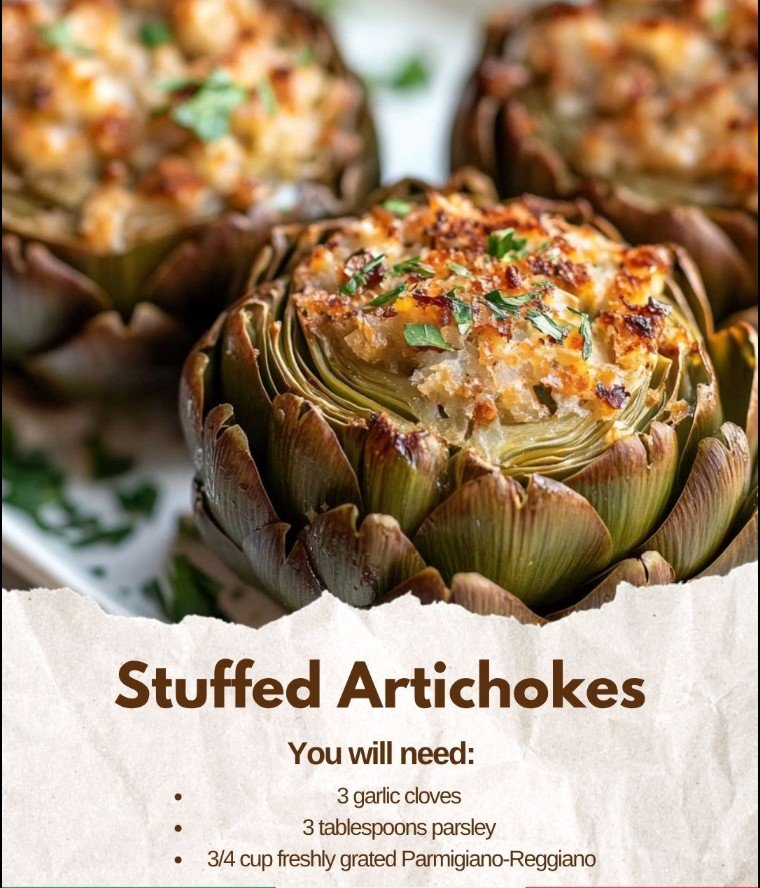Stuffed artichokes are a classic Italian-inspired dish that turns this humble vegetable into a savory, elegant centerpiece. The tender leaves and heart are filled with a flavorful breadcrumb mixture infused with garlic, herbs, and cheese, then baked until golden and aromatic. Perfect as an appetizer, side dish, or even a light main, stuffed artichokes bring a touch of rustic charm and comfort to any table.
Ingredients:
-
4 large fresh artichokes
-
1 lemon, halved
-
1 cup Italian-style breadcrumbs
-
½ cup grated Parmesan cheese
-
¼ cup pecorino Romano cheese (optional for extra flavor)
-
4 cloves garlic, finely minced
-
¼ cup fresh parsley, finely chopped
-
½ teaspoon crushed red pepper flakes (optional)
-
½ teaspoon salt
-
½ teaspoon black pepper
-
½ cup olive oil (plus more for drizzling)
-
1 cup chicken or vegetable broth
Instructions:
-
Prepare the artichokes:
-
Trim the stems so artichokes can stand upright.
-
Cut about 1 inch off the tops, then snip the sharp tips of the leaves.
-
Rub cut surfaces with lemon to prevent browning.
-
Gently pull leaves apart to make space for stuffing.
-
-
Make the stuffing:
-
In a bowl, mix breadcrumbs, Parmesan, Romano (if using), garlic, parsley, red pepper flakes, salt, and black pepper.
-
Drizzle in olive oil and mix until crumbs are moist and crumbly.
-
-
Stuff the artichokes:
-
Carefully spoon the breadcrumb mixture between the leaves, pressing gently to secure.
-
-
Cook:
-
Place stuffed artichokes upright in a large pot or baking dish.
-
Pour broth into the bottom of the pan, drizzle artichokes with a little olive oil.
-
Cover tightly with foil or a lid.
-
Bake at 375°F (190°C) for about 45–55 minutes, or until leaves pull off easily and are tender.
-
-
Serve:
-
Drizzle with extra olive oil and a sprinkle of Parmesan.
-
Enjoy warm by pulling off leaves, scraping the stuffing and tender leaf flesh with your teeth, and saving the heart for the grand finale!
-
Would you like me to also give you a Mediterranean-style stuffed artichoke variation (with olives, sun-dried tomatoes, and feta), or keep it traditional Italian?
